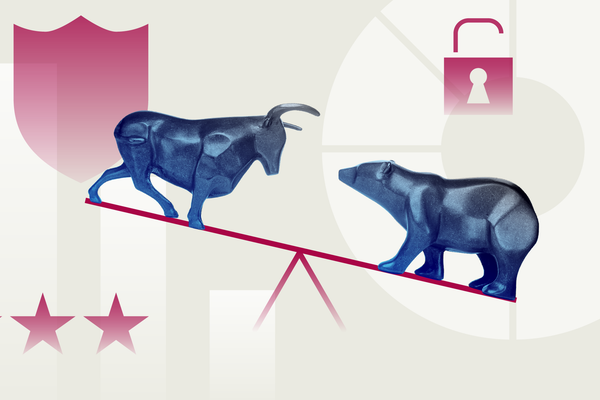
There’s a lot of gloom in the media concerning a major recession and persistent inflation. But many level-headed economists don’t see a recession as inevitable.
David Kelly, Chief strategist at JPMorgan Asset Management told CNBC after the Fed’s September 75 basis points rate hike that the U.S. economy had “one foot in the grave” and the other on a banana peel. Nouriel Roubini, famously called “Dr. Doom” because he rightly predicted the 2008 crisis, told Bloomberg that he expects a “long, ugly recession” with stocks sinking 40%. To further cheer things up, the World Bank has also warned that the global economy could be heading toward a 2023 recession, followed by the IMF downgrading its world economic outlook for next year.
Wages in Focus
One major apprehension fueling the fear of a recession is wage growth, potentially leading to a wage inflation spiral, a spiral that central banks would need to shoot down with sustained interest rate hikes potentially triggering a recession. In early September, Bank of Canada senior deputy governor Carolyn Rogers said that the Bank was closely watching any sign of a wage-price spiral. “Entrenchment (of inflation expectations) would be damaging to the economy,” she said.
Feeding that fear, Warren Lovely, managing director of economics and strategy at National Bank Financial Markets told Yahoo Canada Finance: “I think we’re getting some signals that we’re moving that way”.
Wages have simply been catching up with inflation, believes Ted Mallett, Director of economic forecasting at the Conference Board of Canada. “In the short term, wages are still lagging inflation,” he says. However, he doesn’t rule out the possibility of a wage spiral: “Wages are putting pressure on inflation,” he admits.
Tom Reithinger, fixed income portfolio manager at Capital Group shares Mallett’s views, but he’s skeptical a spiral will set in: “We’ve had only one year of inflation; that’s not really enough to start a spiral.” The role of central banks is crucial: “A spiral depends on central banks being successful in bringing inflation down, he says; they want to slow the economy, aiming for a wage spiral not to set in.”
Morningstar’s Head of U.S. economics Preston Caldwell is not worried by a wage inflation spiral. “Wage growth has responded to price growth over the past year or so with a
time lag,” he observes in his U.S. Economic Outlook: Third Quarter 2022, meaning we could be seeing a one-time catch-up to the jump in the cost of living. “Workers and businesses don’t yet seem to be planning on inflation continuing indefinitely,” he says, “If supply shocks continue to unwind and provide relief on product price inflation, wage growth could also fall in response, nipping in the bud the incipient wage-price spiral.”
Beast in Taming
Of course, inflation is the beast that needs to be tamed. Barring sustained wage hikes, price pressures seem to be receding. The main drivers of inflation, mainly energy and autos, are losing steam, Caldwell notes, projecting “large deflation in prices for durable goods, food and energy over 2023-2026.”
Taming the beast while still avoiding a recession is the excruciatingly difficult task of central banks. The key ingredient for that is confidence, Reithinger highlights. “Recession is a risk, he says; there is a slowdown, for sure, but I can’t speak of a recession. Recessions happen when confidence erodes. Manufacturing surveys in the U.S. and Canada show things slowing down rapidly, but companies and consumers don’t show any obvious loss of confidence right now,” he adds, giving echo to Caldwell’s view.
Everything hinges on how the Fed and the Bank of Canada calibrate their rate increases. “A recession is a very slippery slope, Reithinger warns. It can happen any day because central banks are hiking rates so fast.”
Beware What We Wish For
Financial markets surged in early October, hoping that the Fed would ease its rate hikes, halting any potential slide into recession. But should the central bank do so, as it still has to lower inflation? Mallett, who expects a period of zero growth from now into the first half of 2023, advises us to beware of what we wish for. “Zero growth for an extended period could be worse than a concentrated recession,” he warns.
Caldwell readily puts his trust in the central bank. “After winning an earlier war on inflation in the 1980s, the Fed built a sterling reputation over the 1990s and 2000s by delivering low inflation along with stable GDP growth. Its reputation should survive today's episode intact, in our view. Should our projections play out, cumulative inflation over 2015-26 will average 2%, right in line with the Fed's target.”




















